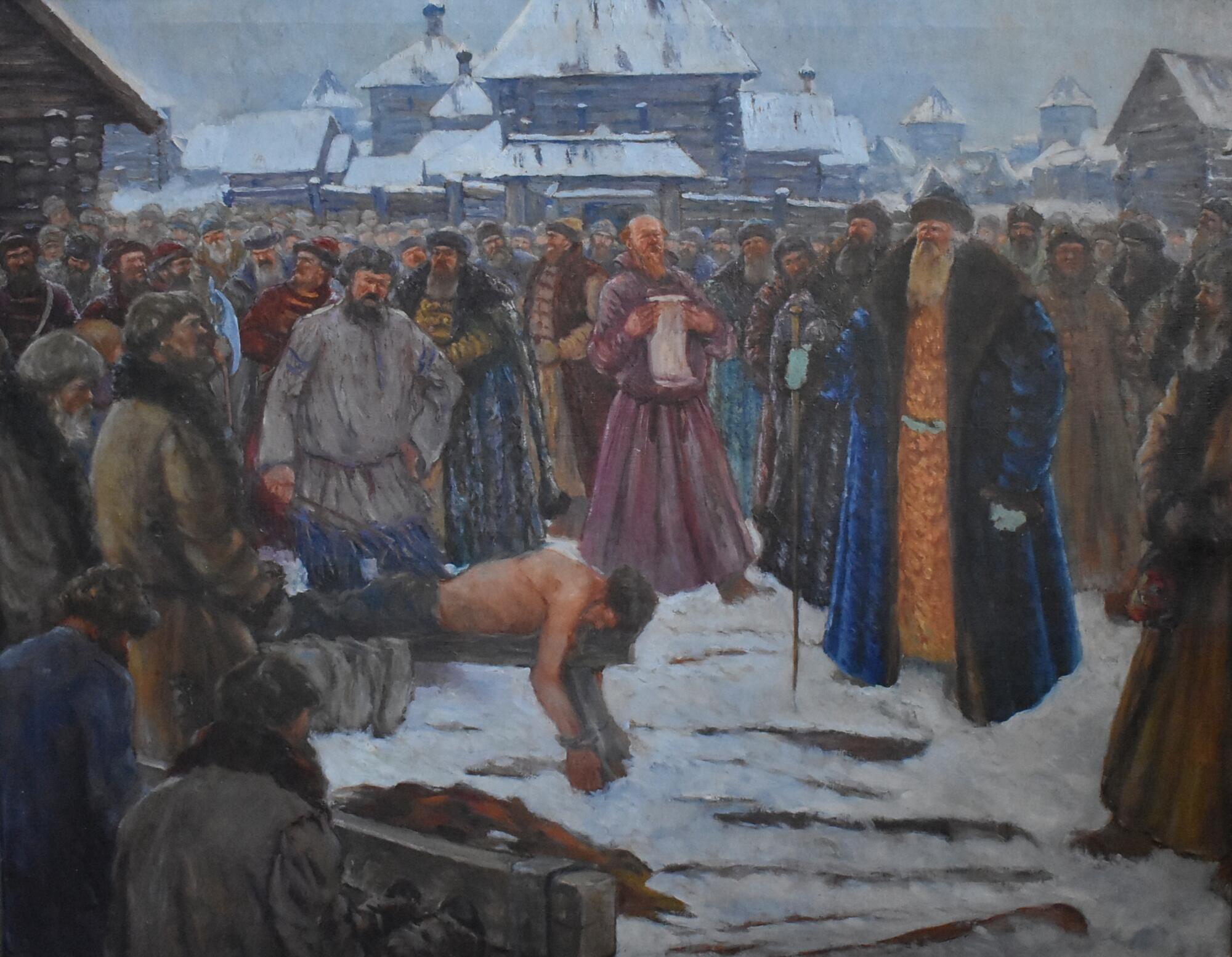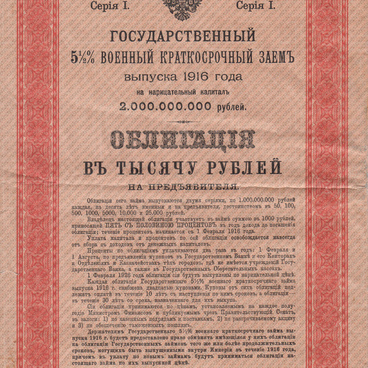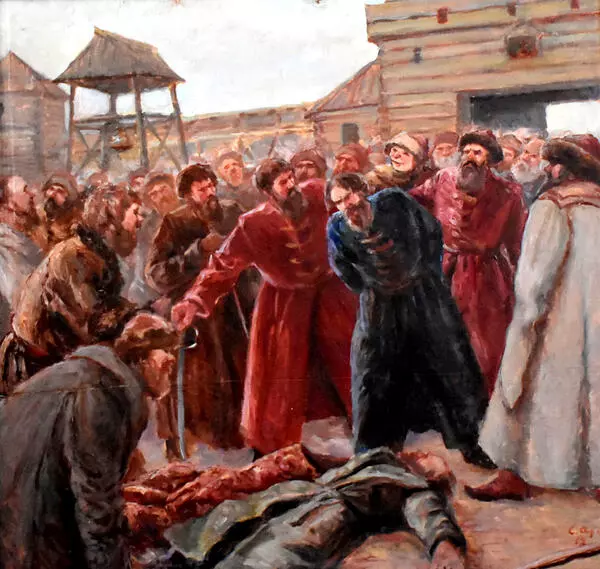In the early 1660s, peasant revolts broke out all over Russia, including Kozlovsky uyezd. Many people from Kozlov joined the troops of the peasant army which besieged Tambov at the end of 1670. It was not until the spring of 1671 that the Tsarist troops, drawn to Tambov from Kozlov, Shatsk and Novy Oskol, suppressed the rebellion.
The rebellion in the Tambov region was linked to the names of two comrades-in-arms of Stepan Razin. One of them was a local serviceman, Cossack ataman Timofey Meshcheryakov. In 1670 together with a group of Cossacks he was sent to suppress the rebellions of peasants and servicemen in the northern part of the Tambov region. In the village of Algasovo of the Morshan district, Meshcheryakov unexpectedly declared his defection to the rebels. In October of the same year, rebels clashed with government troops near Algasovo, who were even forced to use artillery. As a result, the rebels surrendered.
The city of Tambov itself was besieged twice. During the second siege, from November 11 to 16, the city was stormed and its wooden fortifications were badly damaged. In early December 1670, government troops under the command of Ivan Ivanovich Buturlin were brought to Tambov. The rebels were defeated and Meshcheryakov was captured and executed.
Another of Stepan Razin’s men in Tambov region was his uncle, Nikifor Chertok, who came from the Voronezh servicemen. He later fled to the Don. His detachment numbered 3–4 thousand men. In a battle with the tsarist troops from Kozlov the Razin people managed to secure victory. The rebels’ temporary strongholds were the villages of Bokino and Kuzmina Gat. Worried about the successes of Nikifor Chertok, the government hurriedly sent troops there under the command of voivodes Boris Efimovich Myshetsky and Ivan Ivanovich Buturlin, who on January 14 again came to Bokino. The well-trained and equipped army defeated the rebels. The villages of Kuzmina Gat and Bokino were subjected to complete devastation and burning. Nikifor Chertok himself with a group of his cronies managed to escape from the punishers and fled to the Don. Thus, the rebellion in Tambov uyezd was brutally suppressed.
The central part of the displayed composition is a scene of punishment of the rebels. The punishment of the Razin men was carried out in front of a large crowd, where the Tsar’s decree was read out in public.
The painting is one of the works created by the artist as an illustrative addition to the general exhibition of the history hall of the Michurinsk Museum of Local Lore.
The rebellion in the Tambov region was linked to the names of two comrades-in-arms of Stepan Razin. One of them was a local serviceman, Cossack ataman Timofey Meshcheryakov. In 1670 together with a group of Cossacks he was sent to suppress the rebellions of peasants and servicemen in the northern part of the Tambov region. In the village of Algasovo of the Morshan district, Meshcheryakov unexpectedly declared his defection to the rebels. In October of the same year, rebels clashed with government troops near Algasovo, who were even forced to use artillery. As a result, the rebels surrendered.
The city of Tambov itself was besieged twice. During the second siege, from November 11 to 16, the city was stormed and its wooden fortifications were badly damaged. In early December 1670, government troops under the command of Ivan Ivanovich Buturlin were brought to Tambov. The rebels were defeated and Meshcheryakov was captured and executed.
Another of Stepan Razin’s men in Tambov region was his uncle, Nikifor Chertok, who came from the Voronezh servicemen. He later fled to the Don. His detachment numbered 3–4 thousand men. In a battle with the tsarist troops from Kozlov the Razin people managed to secure victory. The rebels’ temporary strongholds were the villages of Bokino and Kuzmina Gat. Worried about the successes of Nikifor Chertok, the government hurriedly sent troops there under the command of voivodes Boris Efimovich Myshetsky and Ivan Ivanovich Buturlin, who on January 14 again came to Bokino. The well-trained and equipped army defeated the rebels. The villages of Kuzmina Gat and Bokino were subjected to complete devastation and burning. Nikifor Chertok himself with a group of his cronies managed to escape from the punishers and fled to the Don. Thus, the rebellion in Tambov uyezd was brutally suppressed.
The central part of the displayed composition is a scene of punishment of the rebels. The punishment of the Razin men was carried out in front of a large crowd, where the Tsar’s decree was read out in public.
The painting is one of the works created by the artist as an illustrative addition to the general exhibition of the history hall of the Michurinsk Museum of Local Lore.




